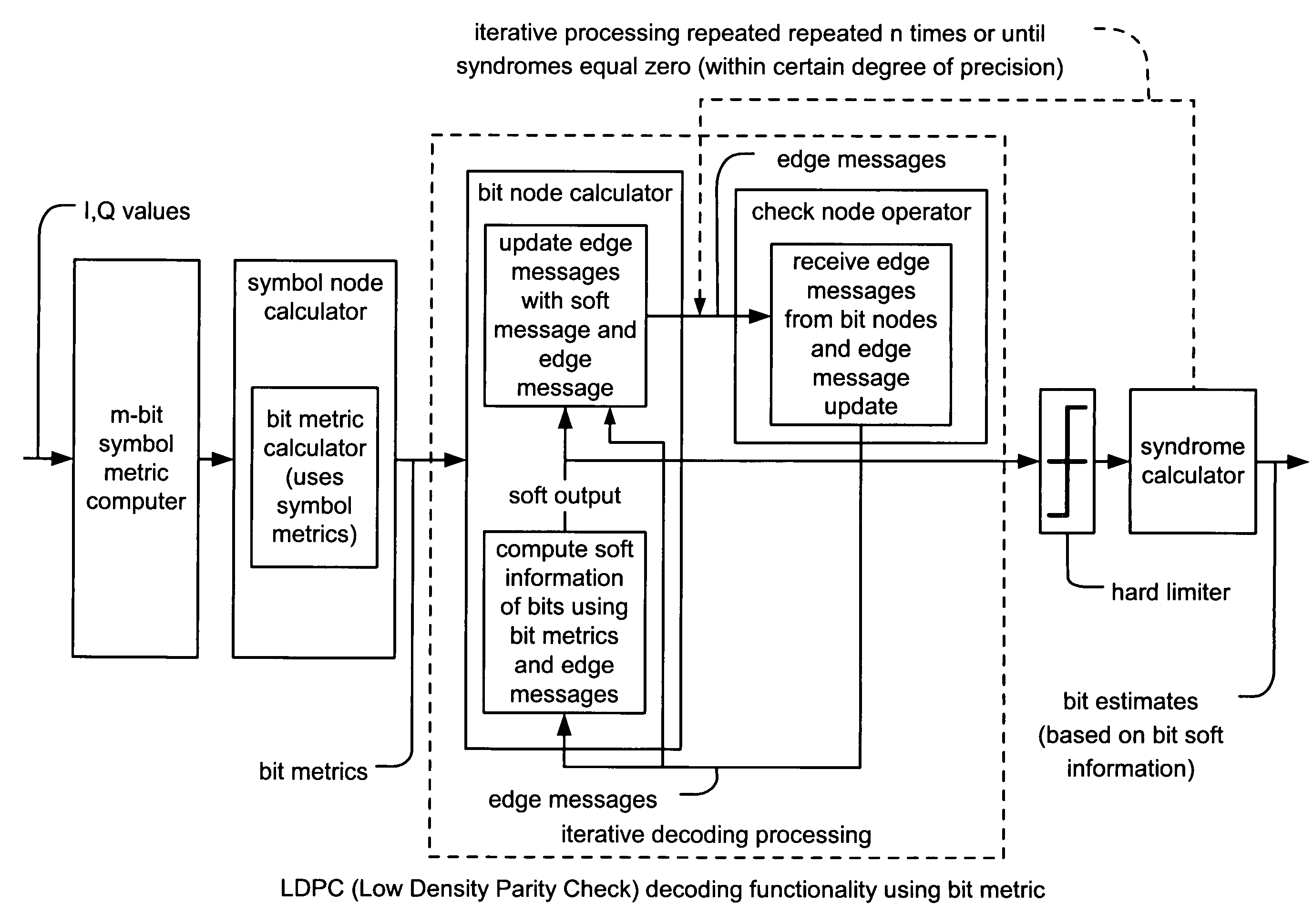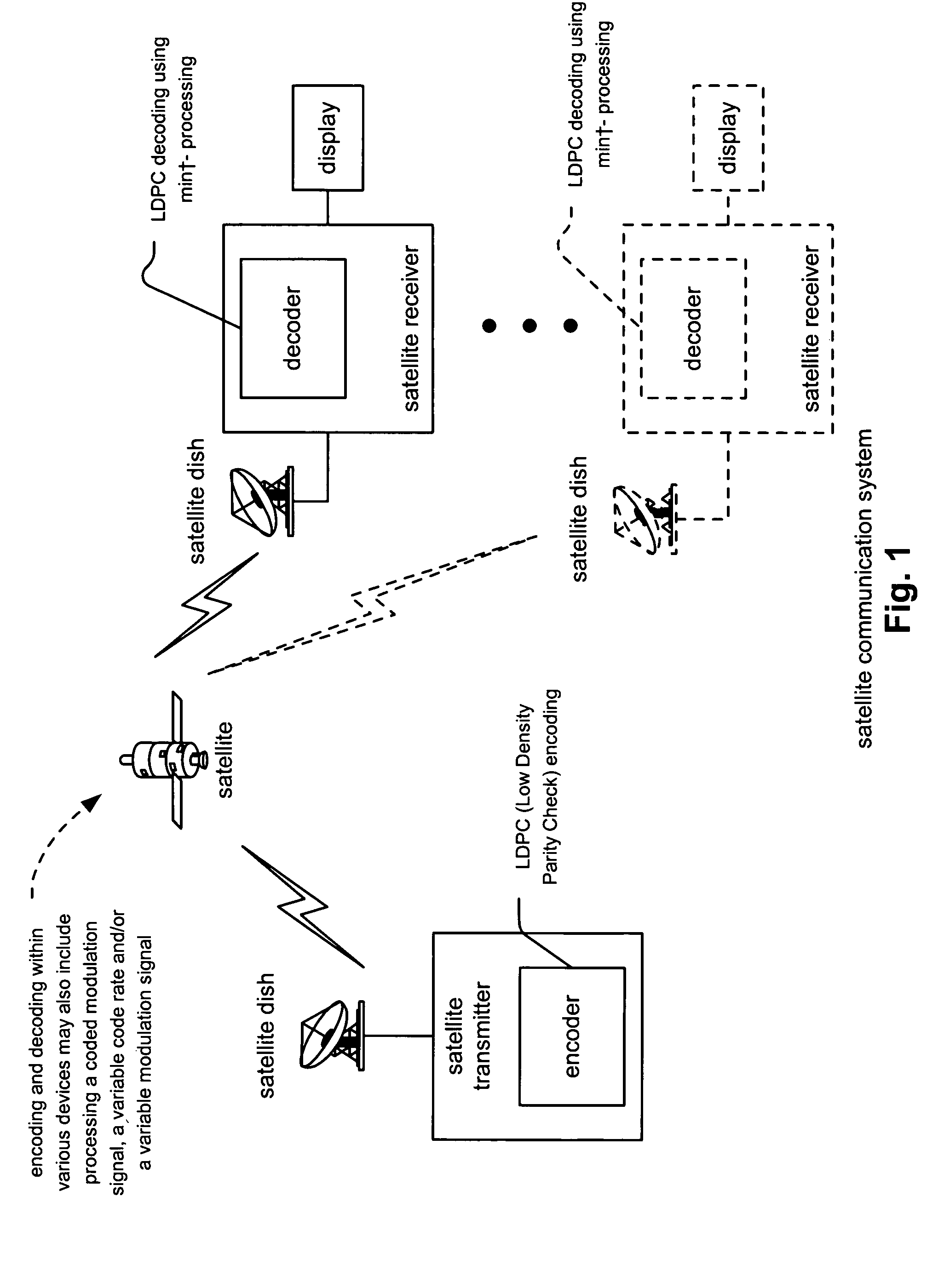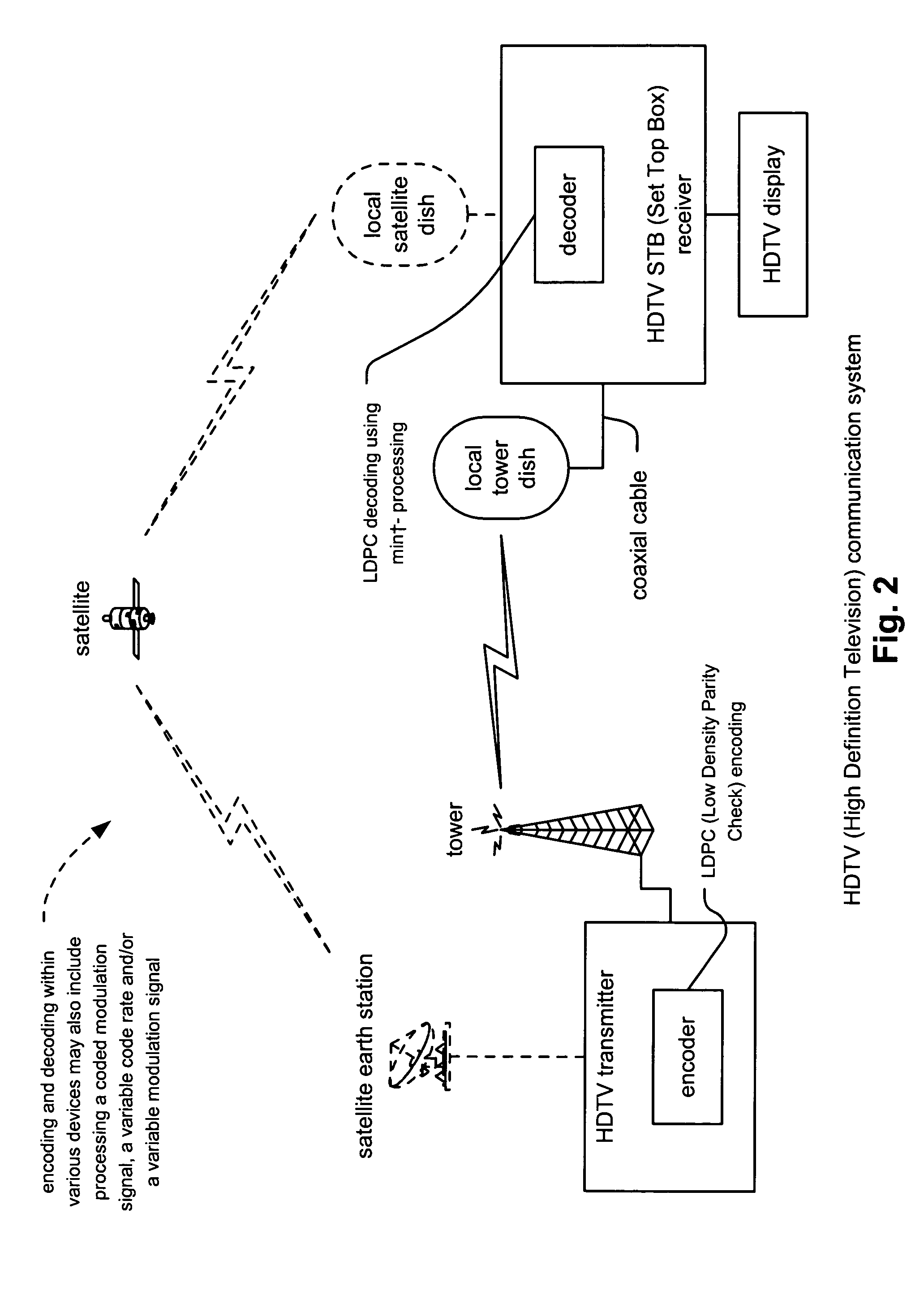Efficient LDPC code decoding with new minus operator in a finite precision radix system
a radix system and minus operator technology, applied in the field of communication systems, can solve the problems of large amount of computation, large amount of data management, and large amount of computation required to perform decoding therein, and achieve the effects of reducing computation latency, high degree of performance, and facilitating hardware implementation
- Summary
- Abstract
- Description
- Claims
- Application Information
AI Technical Summary
Benefits of technology
Problems solved by technology
Method used
Image
Examples
example
[0369]Suppose m=10 and the values of the various edge messages with respect to the check nodes are provided as follows:
Lc(e0)=2,Lc(e1)=8,Lc(e2)=4,Lc(e3)=5,Lc(e4)=3, Lc(e5)=6, and
Lc(e6)=0.5,Lc(e7)=7,Lc(e8)=1.3,Lc(e9)=0.75,Lc(e10)=0.6.
[0370]The results are provided below using each of the all meaningful min†− processing of decoding LDPC coded signals and the simplified approximation min†− processing of decoding LDPC coded signals.
[0371]All Meaningful Min†− Processing of Decoding LDPC Coded Signals
[0372]Step 3 output A=−0.74865
[0373]Then since min*−(A,|Lc(eg)|)=−0.4481, the Step 4 outputs Lb(e9)=0.
[0374]Simplified Approximation Min†− Processing of Decoding LDPC Coded Signals
[0375]For all of the Mi, 0≦i≦9 are positive, M9=0.04207, Imin=6, and V10=10. However, M10=min*(M9,M10)=−0.41042. Then, according to the Modified Step 3, the following result is generated: A=min*(0.41042, x6)=−0.23884. The Step 4 then continues to compute the following: min*−(A,x9)=0.2263. Therefore, Lb(e9)=0.2263 wh...
PUM
 Login to View More
Login to View More Abstract
Description
Claims
Application Information
 Login to View More
Login to View More - R&D
- Intellectual Property
- Life Sciences
- Materials
- Tech Scout
- Unparalleled Data Quality
- Higher Quality Content
- 60% Fewer Hallucinations
Browse by: Latest US Patents, China's latest patents, Technical Efficacy Thesaurus, Application Domain, Technology Topic, Popular Technical Reports.
© 2025 PatSnap. All rights reserved.Legal|Privacy policy|Modern Slavery Act Transparency Statement|Sitemap|About US| Contact US: help@patsnap.com



